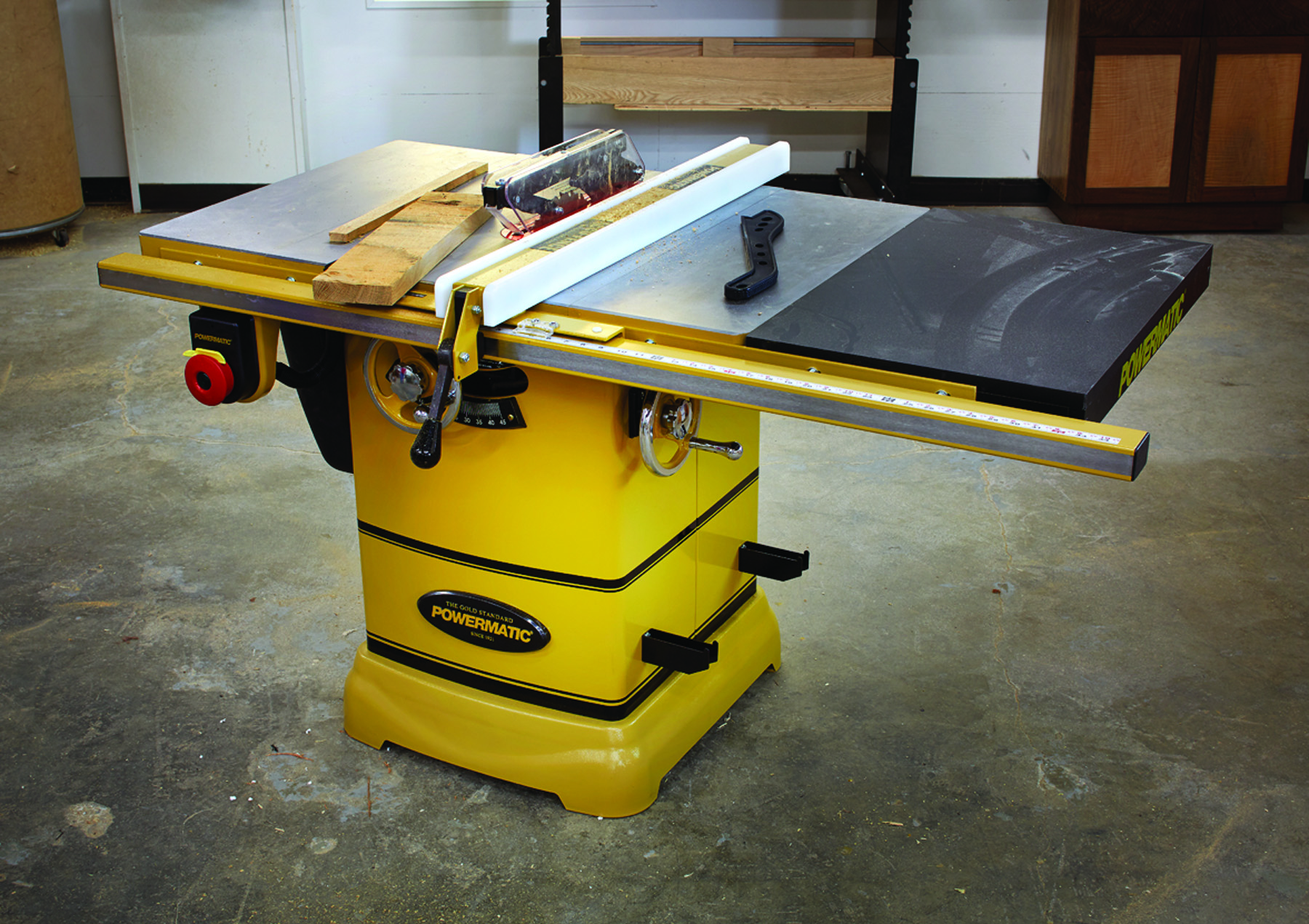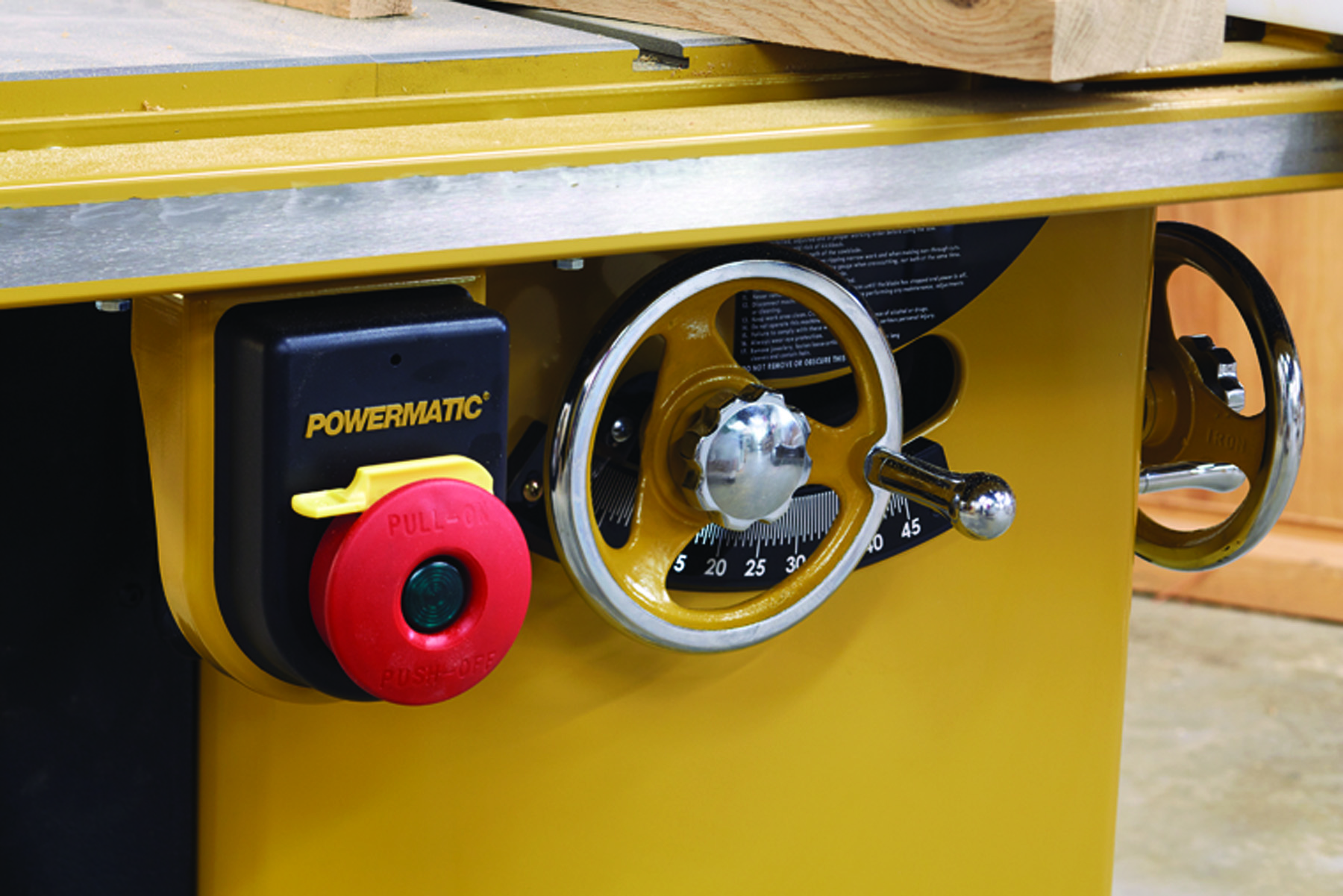We may receive a commission when you use our affiliate links. However, this does not impact our recommendations.

Pro features. The solid base, cast top and details like large cast adjustment wheels make this saw a welcome addition to any workshop.
Tool: Powermatic PM1000
Manufacturer: Powermatic
MSRP: $2400 (50″ fence)
This saw packs a professional punch for your home workshop.
Powermatic’s PM1000 table saw isn’t over-shadowed by its big brother, the PM2000, and it can fit into your home workshop without the added fuss of rewiring your home.
Straight out of the crate you can see that the PM1000 is a well-built shop machine. I was immediately impressed with the finish of the precision-ground, cast iron top. The massive base anchors the saw to your workshop floor. At first glance this saw could easily be mistaken for an industrial-grade cabinet saw.
As you get under the hood, the saw remains heavy-duty. I liked the trunnion and blade-adjustment systems, and there are lots of cast and highly machined parts. The height and angle adjustments are smooth and easy, and the polished 7″ hand wheels have the feel of the venerable Powermatic 66.
 One of the best features of the saw is that the 13⁄4-horsepower motor runs on standard 115v current, so the PM1000 plugs into nearly any outlet in your home. (While you may be tempted, I suggest you resist the urge to set up shop in the dining room.)
One of the best features of the saw is that the 13⁄4-horsepower motor runs on standard 115v current, so the PM1000 plugs into nearly any outlet in your home. (While you may be tempted, I suggest you resist the urge to set up shop in the dining room.)
Many of the details are solid. The bullet catches in the side of the throat-plate – an advance in throat plate design – positively lock it into the table. Along the same lines, the swing-away motor cover provides easy access to the motor, and clears a path to the cabinet to clean away excess dust.
Most of the dust generated on the PM1000 runs through a funneled shroud that covers the lower half of the blade, and it empties directly into a hose that leads to and completely fills the cabinet’s rear 4″ dust port. Without the saw hooked to a collector, I was amazed to see how the dust propelled from the port out onto the floor. With a collector in place, little dust remained in the shroud while a small amount settled in the cabinet.
Because the hose fills the dust port, you occasionally have to open the motor cover to clear the cabinet. To be fair, in the entire time I ran the saw, little dust collected inside the cabinet.
The guard system resembles the old-style guard/splitter that came with the 1990s Model 66. On the new saw, you can quickly remove the guard and anti-kickback pawls from the splitter – vast improvements over the 1990s version.
One concern I have with the guard is that, while the splitter travels with the blade, it’s always above the blade’s apex – no non-through cuts can be made with the splitter in place. To address this problem, Powermatic is adding an interchangeable, low-profile riving knife to the PM1000. Anyone who purchased the saw previous to the addition will get a riving knife free of charge.
Another concern I have is with the blade guard. With little effort the guard’s mounting bolts, when pushed toward the blade, can easily make contact. It’s problems such as this that cause users to remove the guard altogether.
When I plugged in and used the saw for the first time, it seemed a bit under-powered; the blade stopped while I was sawing 4/4 poplar. This seemed off, so I placed a call to Powermatic. Company representatives suggested I try tightening the polyvinyl drive-belt. I did, and that addressed the problem sufficiently that I could easily rip 8/4 hard maple. (I’ll bet other users experience the same; this should have been mentioned in owner’s manual.)
If you’re looking for a premium saw that runs on standard 115v power, put the PM1000 on your list.
Here are some supplies and tools we find essential in our everyday work around the shop. We may receive a commission from sales referred by our links; however, we have carefully selected these products for their usefulness and quality.








